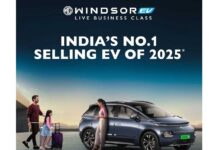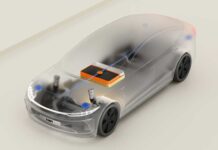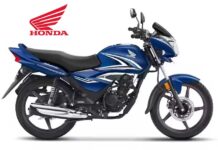
As the global momentum toward decarbonization and clean transportation gains pace, industry trailblazers are redefining the future of mobility with a strong emphasis on sustainability, innovation, and accessibility. In this exclusive interview, we engage with Mr. Harry Bajaj, Founder and CEO of Mobec, to uncover his vision and leadership in reshaping India’s electric mobility landscape.
This conversation offers an in-depth look into the evolving EV ecosystem, exploring critical themes such as electric mobility adoption, mobile EV charging innovations, battery recycling, infrastructure development, and renewable energy integration. Mr. Bajaj shares Mobec’s holistic approach to enabling a smarter, cleaner, and more connected transport future.
From addressing range anxiety with portable charging solutions to supporting national net-zero ambitions through battery circularity and resource recovery, Mr. Bajaj highlights how innovation rooted in real-world impact can drive an inclusive and sustainable mobility revolution.
Vision and Leadership
What inspired you to enter the electric mobility and renewable energy sector?
What truly inspired me to enter the electric mobility and renewable energy sector was a deep urge to challenge the status quo and bring real, tangible change. We saw a clear gap in India’s EV ecosystem range anxiety, lack of accessible charging infrastructure, and overdependence on imports for critical battery materials. These weren’t just technical issues; they were barriers preventing widespread EV adoption.
Mobec started by solving one of the most immediate problems charging. We developed easy-to-use, portable fast chargers for businesses and the Mobec Mini backup generator to ensure uninterrupted power which can be easily used for Portable Charging, Diagnostics, After Sales & Support, Mobility-as-a-service (MaaS), Fleet Support Services, and more.
We realized that true sustainability goes beyond charging, it requires reducing our dependence on imported materials and embracing a circular economy. That led us to set up our own battery recycling plant, where we now recover critical elements like lithium, cobalt, nickel, and rare earth metals. This not only contributes to resource efficiency but also aligns with India’s vision for self-reliance in clean energy.
Ultimately, my inspiration comes from the belief that innovation should solve real problems. Mobec’s committment to making EV charging as easy and reliable as filling petrol, accelerating the shift to clean, sustainable mobility for everyone.
As the Founder and CEO, how would you define your company’s core mission in the context of sustainable mobility?
Our core mission is to redefine the way India moves — by making clean, connected, and convenient mobility not just as a privilege, but as a primary form of sustainable commute. We’re building portable EV charging solutions, creating a resilient circular economic ecosystem that supports the transition to sustainable energy. By combining innovation in energy storage, real-time mobility services, energy dispensing solutions, second-life applications, and circular battery practices, we aim to eliminate range anxiety, reduce infrastructure dependence, and enable a truly green future for mobility.
EV Battery Infrastructure
What are the key challenges in establishing a reliable EV battery infrastructure in India?
Establishing a robust EV battery infrastructure in India is a multifaceted challenge. One of the primary hurdles is the high capital requirement-particularly for mobile EV charging units that demand significant investment in battery storage systems and fast-changing technology. Additionally, the absence of unified charging standards and the complexity of integrating with the existing power grid make deployment even more difficult.
Regulatory uncertainty and fluctuating energy tariffs further slowdown the pace of infrastructure expansion. In many areas, access to the power grid remains limited, and where it exists, slow charging speeds reduce the overall efficiency of the system.
There are also softer challenges to consider: low public awareness, slower user adoption, and the need for a skilled workforce to manage logistics and operations. Training and retaining such talent is often overlooked but critically important.
To address these issues, India needs forward-looking policies, aggressive innovation in battery and charging technologies, smarter grid integration, and substantial private sector investment. Only then can we build an EV infrastructure that is scalable, affordable, and sustainable.
How is your organization tackling issues related to energy dispensing standardization, safety, and swapping activities to cater supply and demands?
We take a structured, three-phase approach to address key concerns around energy dispensing standardization, safety, and balancing supply with demand.
Before a product even takes shape, we focus heavily on resource inspection, availability, and competence — ensuring that the foundation of our development is strong, scalable, and reliable.
During product development, our team invests deeply in extensive R&D, where every component is tested for endurance and safety under real-world conditions. We also explore multiple solutions to the same challenge, so we’re not boxed into one approach — this flexibility allows us to meet varying customer needs across regions and vehicle types.
Once the product is out, we don’t stop. We actively collect feedback and use iterative models like the Waterfall or Spiral lifecycle, which means every version of our product is part of a continuous cycle of improvement — from planning and processing to output, feedback, and refinement.
Every step we take is designed to ensure safer, smarter, and more standardized energy delivery for a sustainable EV ecosystem.
The Future of Sustainable Mobility
What role do policy and government incentives play in accelerating adoption?
Policy and government incentives play a crucial role in accelerating EV adoption by creating a favourable environment for both manufacturers and consumers. By offering subsidies, tax benefits, and reducing import duties on key materials like cobalt and lithium-ion battery scrap as seen in the Union Budget 2025 governments make EVs more affordable and accessible. These measures lower production costs, encourage battery recycling, and strengthen the overall EV ecosystem. We view such initiatives as vital steps toward advancing clean, efficient, and sustainable mobility in India.
How is your company aligning with national or global sustainability targets, such as carbon neutrality or net-zero goals?
Mobec’s mission is strongly aligned with India’s and the global community’s sustainability goals, including carbon neutrality and net-zero targets. Through our innovative green mobility and energy solutions, we are actively reducing environmental impact across the battery lifecycle.
Our battery recycling initiatives use cutting-edge technology to recover critical materials such as lithium, cobalt, nickel, copper, and more significantly reducing dependency on virgin resources. With processes like blackmass and mineral extraction, we support the creation of high-performance batteries from recycled materials, reinforcing a circular economy.
Additionally, we focus on battery refurbishment and second-life applications, ensuring used batteries are tested, upgraded, and repurposed for home and commercial energy storage, thereby minimizing waste and maximizing battery life.
Renewable Energy Integration
How is renewable energy integrated into your energy dispensing, ESS, and power backup generation solutions?
For us, renewable energy is one of the core pillar of our products. We actively integrate solar power technology into our energy dispensing units, ESS (Energy Storage Systems), and power backup solutions to create a multi-channel approach to clean energy delivery.
This means our products are designed to not only draw power from traditional grids but also harness solar energy wherever possible — ensuring that we can cater to rising energy demands while reducing our carbon footprint. By enabling hybrid energy sourcing, we offer users flexibility, reliability, and most importantly, a pathway for reliable energy access.
Closing Reflections
What advice would you give to startups and entrepreneurs looking to make a mark in clean tech and mobility?
For those entering this space, it’s essential to think beyond short-term wins. Focus on building solutions that are scalable, efficient, and truly sustainable. Surround yourself with a team and partners who believe in the larger purpose, not just the product. Regulatory landscapes may shift and technologies may evolve, but if your foundation is rooted in impact and innovation, you’ll stay ahead. Clean mobility is the future and building it demands patience and precision.
Lastly, what legacy do you hope to leave behind in the realm of sustainable transport and energy?
If Mobec can be remembered as the catalyst that helped eliminate range anxiety, made renewable energy easily accessible, and create a mindset for businesses and communities to use available resources affectively, then that, to me, is a legacy worth building. It’s about proving that innovation can be responsible, scalable, and deeply human at the same time.









